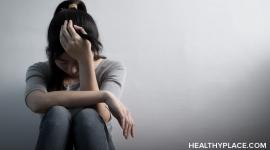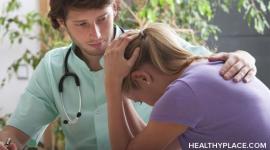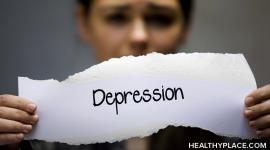What Is Depression? Depression Definition
Depression is a treatable mental illness experienced by approximately 9% of Americans at any given time, according to the Centers of Disease Control and Prevention (CDC). Depression can be experienced at any stage of life and similarity in depression symptoms and statistics have been found across countries like the U.S., Canada, Japan, Iran and Switzerland. Depression in women is diagnosed significantly more frequently than in men.1 (See: Depression in Men: Understanding Male Depression)
While major depressive disorder is the most common, other types of depression also exist based on additional specific symptoms. Clinical depression classifications include:
- Major depressive disorder (MDD) – a period of two or more weeks in a depressed (low or sad) mood episode
- Depression with melancholic features – depression, as above, but with additional symptoms like waking up two hours earlier than usual. Depression that is worse in the morning. Feeling excessive guilt.
- Depression with catatonic features – depression, as above, but with additional symptoms like extreme negativism or mutism, motor immobility and uncontrollable repetition of words spoken by another
- Atypical depression – depression that includes symptoms like an increased need for sleep, increased appetite, weight gain and feelings of heaviness in the arms or legs (see: What is Atypical Depression? Symptoms, Causes, Treatment)
- Seasonal affective disorder (SAD) – depressions that occur corresponding to a season, generally the winter, in the last two years or more; often atypical depression (see: What is Seasonal Depression Disorder? Symptoms, Treatment)
- Postpartum depression – major depression immediately following childbirth (see: What is Postpartum Depression (PPD), Postnatal Depression?)
- Depressive disorder not otherwise specified (NOS) – depression identified by a clinician but of a type that does not explicitly fit into a defined category
Major depressive disorder is most commonly referred to as simply "depression." Depression is also often termed "unipolar depression" to differentiate it from bipolar depression. Bipolar depression has the same symptoms as unipolar depression during a depressive episode, but bipolar disorder also contains manic or hypomanic episodes.

Depression Definition: What is Major Depressive Disorder?
Major depressive disorder is defined in the latest version of the Diagnostic and Statistical Manual of Mental Disorders (DMS-IV-TR). A depression checklist outlining symptoms includes the following:
- Sadness, emptiness, a depressed mood
- Lack of interest or enjoyment in activities previously found pleasurable
- Reduced or increased need for sleep, energy
- Reduced or increased appetite
- Difficulty in concentrating, paying attention, making decisions
- Thoughts of harming oneself or others
Situational Depression vs. Clinical Depression
The causes of clinical depression include both genetic and environmental factors. However, in some cases, people experience an inability to cope with a life change or stressor. People in this situation often experience depressive symptoms too, so this scenario is sometimes informally referred to as "situational depression." Situational depression, however, is not a diagnostic depression classification and normally what the person is really experiencing is an adjustment disorder with depressive features. Adjustment disorders may include depression symptoms, but are short-term and are directly related to an outside stressor.2
APA Reference
Tracy, N.
(2021, December 31). What Is Depression? Depression Definition, HealthyPlace. Retrieved
on 2026, January 18 from https://www.healthyplace.com/depression/depression-information/what-is-depression-depression-definition-and-checklist


